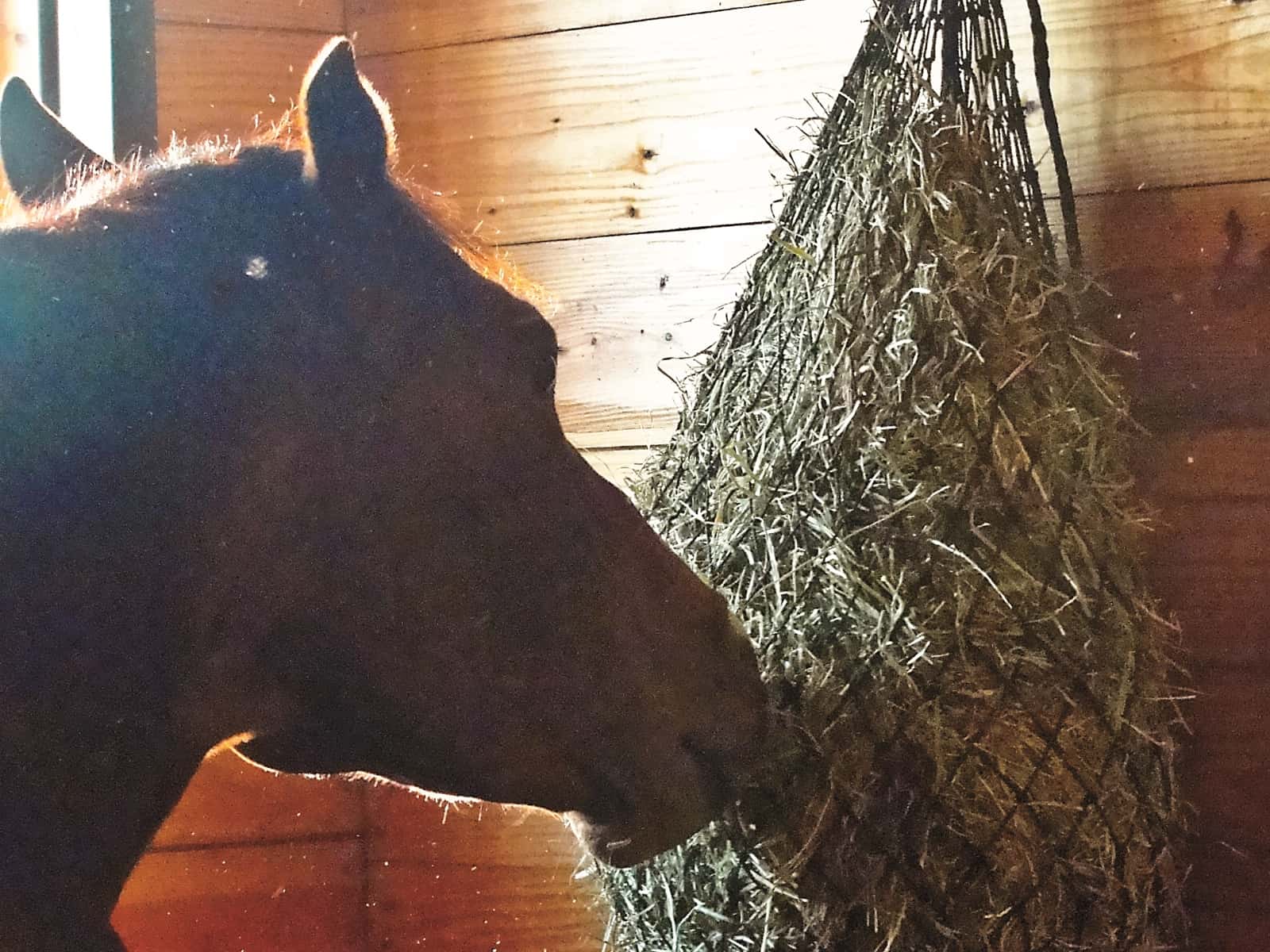Feeding Horses on Stall Rest

Take steps to manage your horse’s weight and behavior while he’s cooped up
You’re headed out to catch your pastured horse for a riding lesson when you notice that his hock is the size of a softball. Later, you hold your breath as the veterinarian examines the injury and cringe at the sound of those two dreaded words: stall rest. Continuous confinement of any horse for long periods poses many obstacles, especially where nutrition is concerned. Diet plays a critical role in a horse’s behavior and overall gastrointestinal health, and not properly feeding horses on stall rest can be worse than the injury itself.
Cutting the Calories
Whether your patient is a racehorse or a weekend trail horse, stall rest means a serious reduction in his usual amount of activity—voluntary and otherwise. Depending on his level of work prior to the injury, you will need to reduce his total calorie intake to account for the decrease in activity. Here’s an example of a 1,100-pound horse’s daily caloric requirements:
Table 1
| Level of Work & Description | Mcals per Day |
| Idle: minimal activity | 15.2 |
| Light: recreational riding | 20.0 |
| Moderate: school horses, ranch work | 23.0 |
| Heavy: low-level eventing, show horses | 26.6 |
| Very Heavy: racing, endurance, elite three-day eventing | 34.5 |
From NRC Nutrient Requirements of Horses, 2007
Create a free account with TheHorse.com to view this content.
TheHorse.com is home to thousands of free articles about horse health care. In order to access some of our exclusive free content, you must be signed into TheHorse.com.
Start your free account today!
Already have an account?
and continue reading.
Written by:
Kristen M. Janicki, MS, PAS
Related Articles
Stay on top of the most recent Horse Health news with















